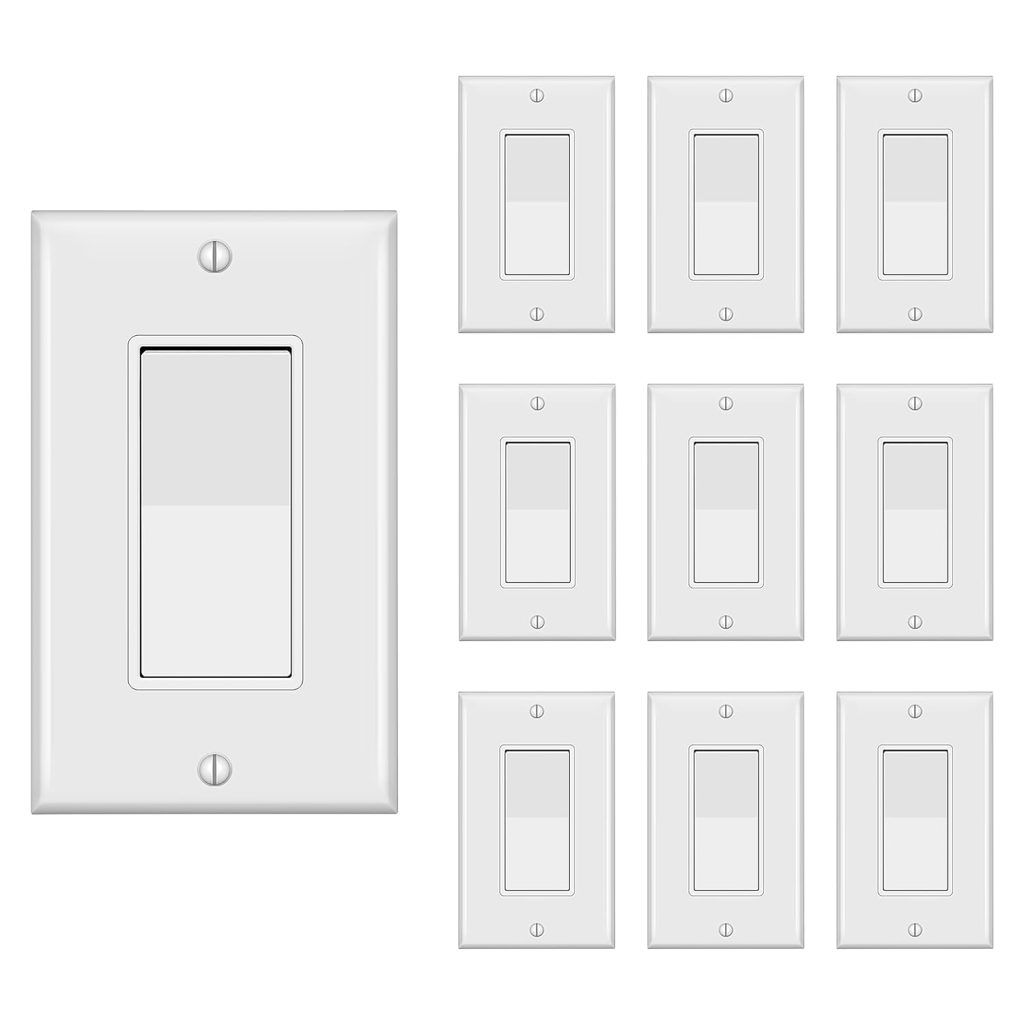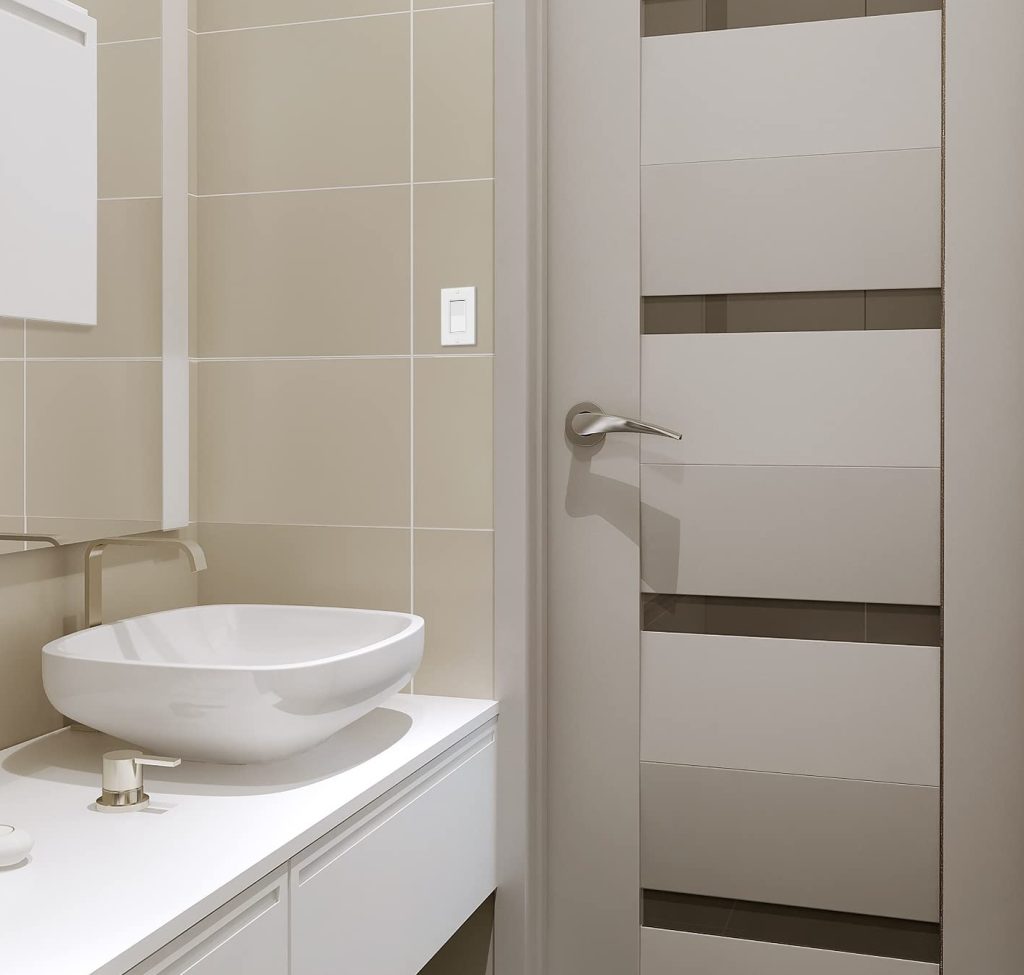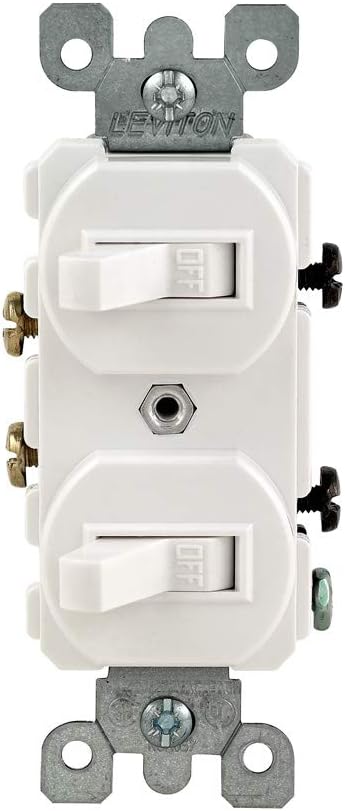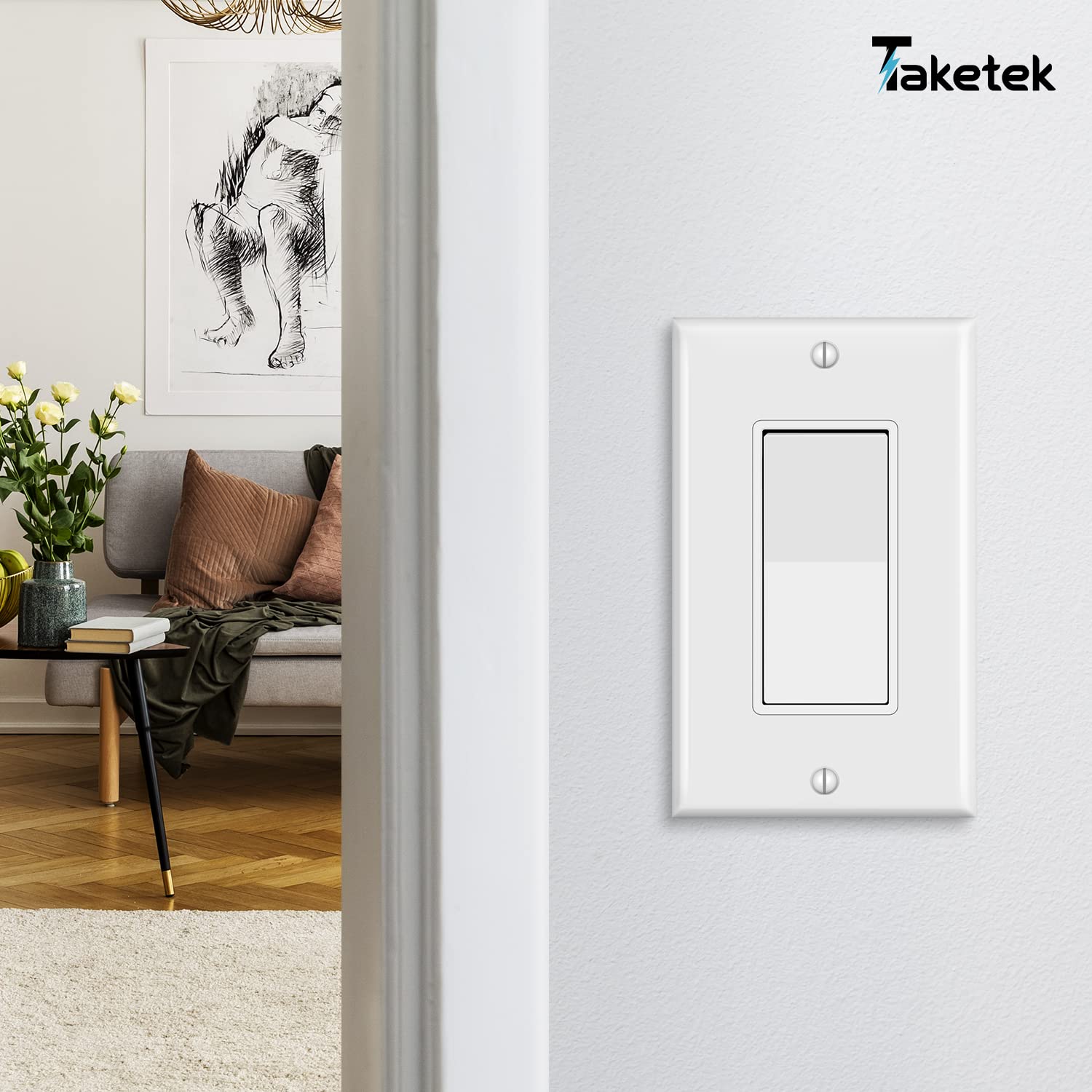Contents [hide]
Introduction to Light Switches
The Basic Function and Importance of Light Switches
Light switches are an integral part of home and building infrastructure, providing a simple yet crucial function in controlling lighting and, at times, other electrical devices. The most basic light switch, often referred to as a single-pole switch, enables users to toggle the power supply to a light fixture or outlet on and off. Their ubiquitous presence in rooms and key areas allows for convenient and immediate influence over the lighting ambiance and energy usage within a space. Given their wide usage, understanding the different types of light switches and their appropriate applications is an essential aspect of both home maintenance and improvement.
Evolution of Light Switch Design and Technology
Over time, light switch design has evolved to accommodate a variety of needs and preferences. From the early pull-chain models to modern smart switches, technology has transformed the humble light switch into a device capable of catering to sophisticated user demands. Innovations have produced switches that offer dimming capabilities, motion detection, and integration with home automation systems. These advancements have not only contributed to the aesthetic value and functionality of light switches but have also enhanced the energy efficiency and safety of lighting systems.

Safety Considerations with Light Switches
When it comes to electrical fixtures like light switches, safety is paramount. The installation and operation must adhere to strict electrical codes and standards to prevent hazards such as electrical fires or shocks. Switches are designed with features like grounded terminals and insulation to minimize risks. It’s critical for homeowners and installers to follow guidelines regarding the proper installation and use, including the type of switch appropriate for particular locations, such as moisture-resistant switches for bathrooms or outdoor areas. Regular maintenance and inspections by qualified electricians can help ensure the ongoing safety and reliability of these devices.
The Different Types of Light Switches
Common Light Switch Types and Their Uses
Homeowners and electricians encounter a variety of light switch bulb, each suited for different situations and control needs. Single-pole switches are the most common type found in homes, controlling a single fixture from one location. Three-way and four-way switches are used when lighting control is needed from two or more locations, such as at the top and bottom of a staircase or at either end of a long hallway. Dimmer switches allow for adjusting light intensity to create ambience and save energy. Other specialized switches include timer switches, which can turn off lights after a set period, and motion sensor switches that automatically operate lights when movement is detected.

Advantages of Dimmer and Timer Switches
Dimmer and timer switches immensely add to the convenience, energy efficiency, and longevity of lighting systems. Dimmer switches provide a flexible lighting environment, allowing users to adjust the room’s brightness to their preference or activity needs. They also contribute to energy savings and help extend the life of bulbs by reducing the constant electrical load. On the other hand, timer switches can be programmed to automatically turn lights on or off at designated times, which is invaluable for security, routine, and energy conservation, especially when the occupants are away.
Innovative Smart Light Switches and Automation
Smart light switches represent the cutting edge in lighting control, offering seamless integration with home automation systems and voice-activated devices. They enable users to control lighting remotely via smartphone apps, set schedules, or trigger lights based on other smart home devices’ activities. Smart switches can also provide insights into energy usage patterns, helping homeowners manage electricity consumption effectively. As part of a comprehensive smart home system, they contribute to a highly personalized, efficient, and modern living experience, highlighting how far technology has taken the once simple light switch.

Installing and Maintaining Light Switches
How to Safely Install a Light Switch
Installing a light switch is a relatively straightforward process, but it requires caution and knowledge about electrical systems. Before any installation attempt, the power supply to the switch must be turned off at the breaker box to ensure safety. Using the proper tools and following wiring diagrams accurately can prevent faults and electrical hazards. It’s also important to choose the correct type of switch for the intended use and location. DIY enthusiasts can typically handle simple replacements, but more complex installations, or any doubts regarding the electrical setup, should be left to professional electricians.
Troubleshooting Common Light Switch Problems
Like any electrical component, light switches can encounter problems that require troubleshooting. Common issues include flickering lights, which could indicate a loose connection, or a non-responsive switch, potentially resulting from faulty wiring or a tripped circuit. Buzzing noises or warm switch plates can signal more serious issues that need immediate attention. Some straightforward fixes include tightening connections or replacing worn components, whereas recurring or complex problems must be assessed by a professional. Regular check-ups can often pre-emptively address these issues before they escalate.

Updating and Upgrading Light Switches in Your Home
Upgrading light switches can be a strategic move for both aesthetic upgrades and functional improvements in a home. Replacing dated switches with modern designs can refresh a room’s appearance
and provide a sleek touch to your interior decor. Consider the room’s theme and choose switch plates that complement the overall style, whether that’s contemporary, traditional, or something in between. Functionally, transitioning to dimmers in living and dining areas can enhance ambiance and energy savings. For tech-savvy households, incorporating smart switches can bring your lighting control into the realm of the Internet of Things (IoT), allowing for voice commands and remote operation, which can contribute to both security and convenience.
In taking on such upgrades, it’s essential to research the compatibility of new switches with existing light fixtures and bulbs. Some smart switches may require a neutral wire, which not all older homes have, and certain types of bulbs may not be dimmable. It’s also a perfect opportunity to reassess your energy usage and possibly incorporate more energy-efficient lighting solutions throughout your home. With smart technology, you can even track and optimize your energy consumption over time, making your switch upgrade both a functional and eco-conscious decision.

Sustainable Choices and Energy Efficiency
Beyond individual convenience and comfort, the choice of light switches can have broader implications for energy sustainability. By selecting energy-efficient switches like dimmers and timers, you can significantly reduce your household’s carbon footprint. Additionally, smart switches often come with energy monitoring features, giving you greater insight into your energy consumption patterns and allowing you to make changes to reduce your energy use. This can lead to notable energy savings and minimized waste, contributing positively toward environmental conservation efforts.


